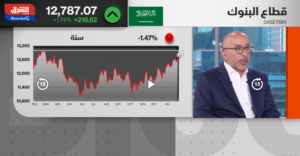Property investments at a time of higher inflation need deft handling
A surging dollar will go some way towards taming inflation
Economics is full of stories and competing narratives. Words like ‘enabling, facilitating, regulating, spending, and allocating’ create stories often boring and put both regulators and analysts in inertia, forever having to ‘backfit’ and ‘shapeshift’ their analysis to explain events happening. In doing so, they manage to do the exact opposite, and attract no end of admonition and grief by critics.
The current narrative, dominated by inflation and interest rates, similarly points to problematic explanations that need to be scrutinized for investors to avoid pitfalls last seen in the 1970s. The current phenomena of rising inflation and interest rates is accompanied by the narrative that it will have little or no effect on housing prices, either because there is sufficient demand, insufficient supply, and/or the fact that there is enough cash in the system to avoid the deleterious effects that rising interest rates have on demand.
Even a cursory analysis of this reveals the underlying conclusions to be vacuous. Rising interest rates and inflation stunt demand – both for consumer as well as capital goods – and with central banks raising rates in unison to contain inflationary forces, demand reduction is the only inevitable outcome. The demand curve, already starting to moderate, will shift lower as household incomes continue to grapple with rising mortgage payments and constrained spending.
That football analogy
This process will continue until income/annuity schemes catch up and/or ‘peak inflation’ (this narrative is already making the rounds by apologists) is arrived at and interest rates start falling again. As a result of rising rents, the incentive to buy increases, but when mortgage payments go up, overall demand is curbed, inevitably leading to a moderation in prices as household budgets get squeezed.
The way to think about this is by way of a sports analogy involving spectators in a football game. If a few stood up to get a better view, then almost everyone else would ultimately have to stand up (that is rising inflation). But if everyone sat down, then all would enjoy a better view (falling inflation). In this interim period where everyone is standing up, the only way to sustain interest in the game is for there to be addons by way of beverages, binoculars, etc (annuity income streams and/or rising wages) until the view (prices) starts to look attractive again.
This is the current phase of the pricing cycle that we are in with regards to the housing market.
Veering towards extreme reactions
While the above is fairly obvious, it leads to the question of what are investors supposed to do? In the past, governments made two catastrophic errors: one was to permit the great depression, and the other was in fostering the period of great inflation. The origins of both failures were remarkably similar and stemmed for mistaken thinking that informed the intellectual climate.
The impulse to push money and credit to the economy to stimulate demand was as reckless as the impulse to destroy demand in the 1920s. In the 1930s governments were too stingy in supplying money, in the 1970s, it was too profligate. Will it be different this time around?
Fortunately, there seems to be some signs of a new economic order, shaped by more nimble policies (especially that in the UAE which has fostered demand). This, combined with a strong US dollar is expected to curb inflationary forces, ultimately implying that the moderation in prices will likely be subdued and shallow at worst.
However, there are always weak links in this transition process, and investors would be well advised to be patient, and on the lookout for opportunities where prices react excessively. React they will; the resilient and the ‘money mind’ investor will or should be quick to act in those times.





